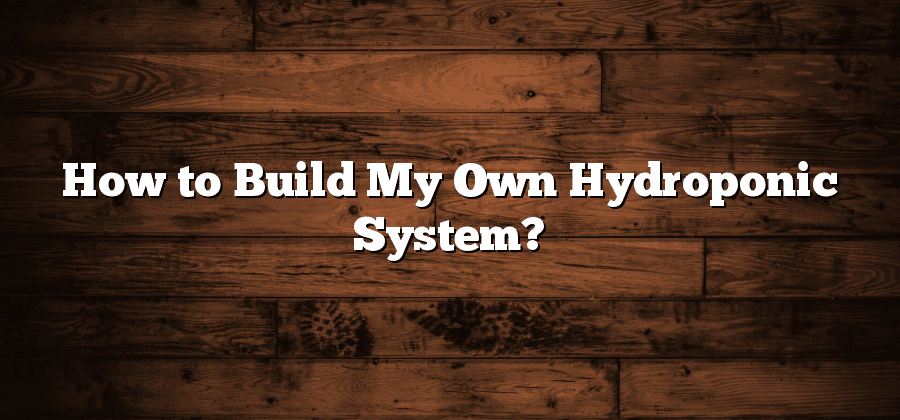Basics of Hydroponics
Hydroponics is a practice of growing plants in a nutrient-rich water solution, without the use of soil. This method has gained popularity in recent years due to its numerous benefits and advantages. One of the key advantages of hydroponics is its ability to conserve water. Compared to traditional soil-based gardening, hydroponics uses significantly less water, as it allows for the recycling and reuse of the nutrient solution. Additionally, hydroponics provides excellent control over various environmental factors such as temperature, humidity, and lighting. This allows farmers to create the optimal conditions for plant growth, resulting in faster growth rates and higher yields.
In hydroponics, plants receive nutrients directly through their root systems, without the need for them to extract nutrients from the soil. This allows for more efficient nutrient absorption and utilization by the plants, leading to healthier and more vibrant growth. Furthermore, by eliminating soil-borne pests and diseases, hydroponic systems significantly reduce the need for pesticides and other chemical treatments. This not only promotes healthier and organically grown crops but also reduces the risk of environmental contamination. With the advancements in technology and increasing knowledge in hydroponics, this innovative growing technique is rapidly becoming a viable alternative to traditional soil-based agriculture.
Choosing the Right Hydroponic System
Hydroponics offers an innovative and efficient way to grow plants without the use of traditional soil. Choosing the right hydroponic system is crucial to ensure successful and sustainable plant growth. There are various types of hydroponic systems available, each with its own unique advantages and considerations.
One popular hydroponic system is the nutrient film technique (NFT). In this system, a thin film of nutrient-rich water continuously flows over the plant roots, providing them with necessary nutrients. NFT systems are ideal for growing leafy greens and herbs, as they promote fast and healthy growth. Another popular option is the deep water culture (DWC) system, where the plant roots are submerged in a nutrient solution. This system is relatively simple and affordable, making it suitable for beginners. DWC systems are commonly used to grow larger plants, such as tomatoes and cucumbers.
Selecting the Ideal Location for Your Hydroponic System
Location plays a crucial role in the success of your hydroponic system. When selecting the ideal location for your setup, there are several factors to consider. First and foremost, ensure that the location receives ample natural light. Hydroponic systems rely on light for photosynthesis and plant growth, so placing them in an area with direct sunlight or providing sufficient artificial light is essential. Additionally, consider the temperature of the location. Most hydroponic plants thrive in temperatures between 65°F and 75°F, so it is important to choose a spot that maintains a relatively stable temperature. Lastly, assess the space available and ensure that it can accommodate your chosen hydroponic system, taking into account factors like height, accessibility, and enough room to move around for maintenance and harvesting. By carefully considering these factors, you are setting a solid foundation for a thriving hydroponic garden.
Essential Equipment for Your Hydroponic System
When it comes to setting up a successful hydroponic system, having the right equipment is crucial. However, with so many options available on the market, it can be overwhelming to know which tools are essential for your setup. To help you navigate through the choices, we have compiled a list of the key equipment you will need for your hydroponic system.
First and foremost, a high-quality growing container is essential. This is where your plants will thrive, so it is important to choose a container that is sturdy, durable, and suitable for hydroponic gardening. Look for containers that have good drainage capabilities to prevent waterlogging and ensure proper oxygenation of the roots. Additionally, consider the size of the container, as it should accommodate the growth of your plants throughout their life cycle.
Understanding Nutrient Solutions for Hydroponics
When it comes to hydroponics, one of the most important aspects to understand is the nutrient solutions that are used. Unlike traditional soil gardening, hydroponic plants rely on nutrient-rich solutions to provide them with the essential elements they need to grow and thrive. These solutions are carefully formulated to ensure that plants receive the right balance of nutrients in a form that is easily accessible and absorbed by the roots.
The composition of a nutrient solution will depend on the specific needs of the plants being grown. Different plants require different ratios of nutrients such as nitrogen, phosphorus, and potassium, as well as trace elements like iron, calcium, and zinc. It is vital to have a good understanding of the nutritional requirements of the plants you are growing in order to create the most suitable nutrient solution. This can be achieved through experimentation, research, and monitoring plant health and growth. Additionally, it is important to regularly check and maintain the pH levels of the nutrient solution to ensure optimal nutrient uptake by the plants. Overall, understanding the intricacies of nutrient solutions in hydroponics is crucial for successfully growing plants in this system.






